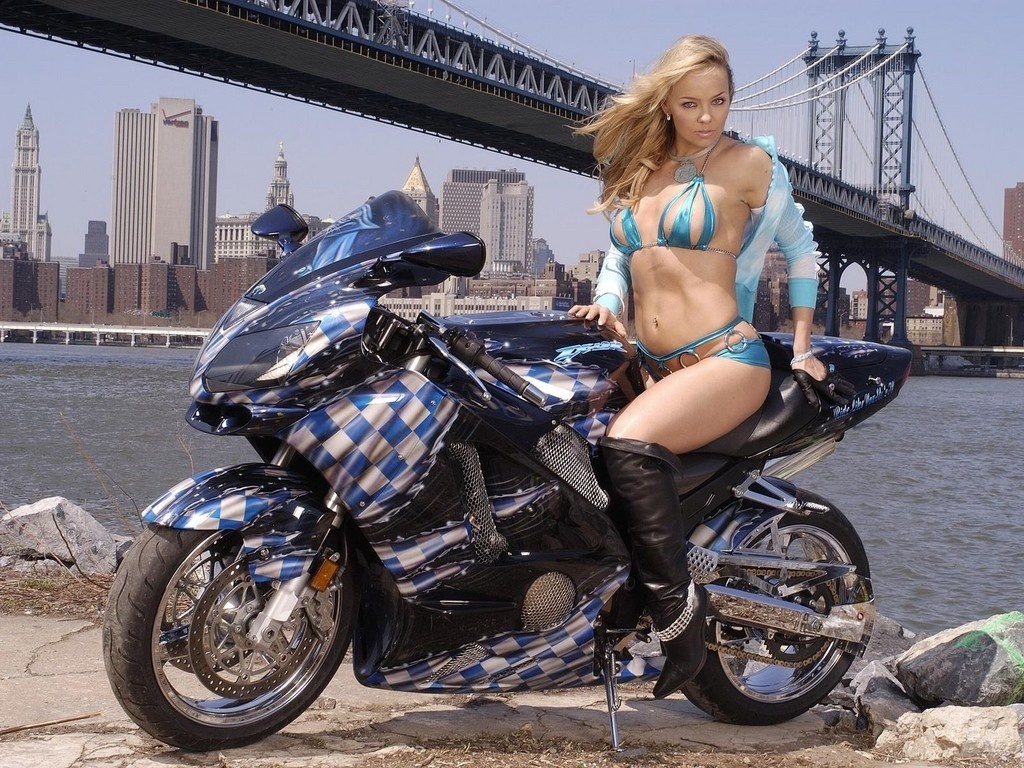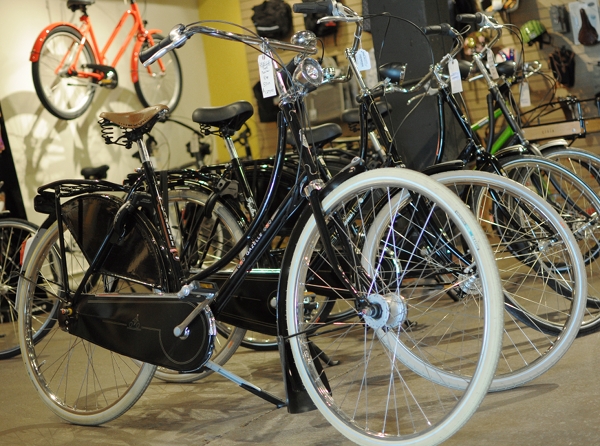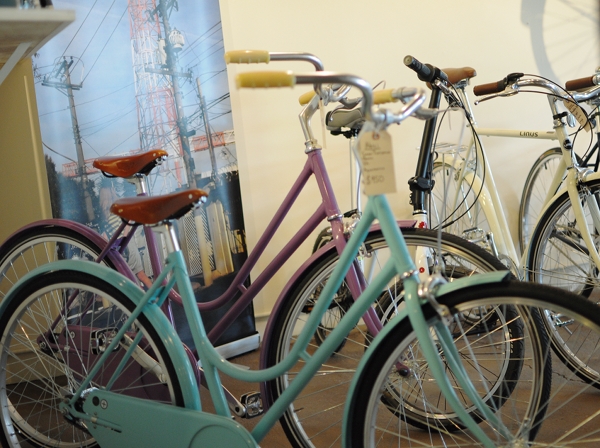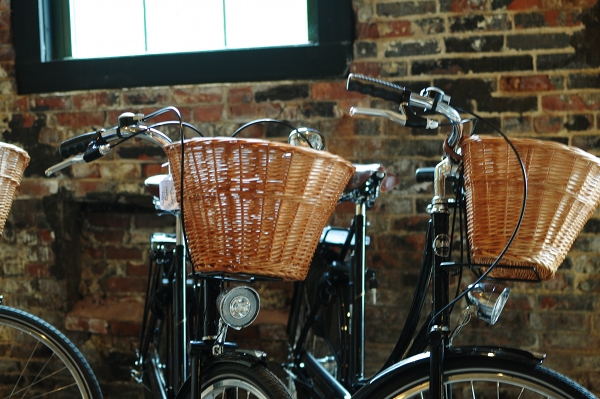The "Manufacturer Profiles" page linked in the upper left corner lists popular manufacturers that produce quality ladies' bicycles which I believe to meet the urban commuting criteria described here. Fairly often, I am asked about the differences between the bicycles featured on this page - particularly in terms of weight, speed, and their ability to handle hills. Happily, I have now ridden almost all of these bikes, and am able to provide this type of feedback. If I had to classify the higher-end loop-frame bicycles currently available on the market, I would say there are three main categories: the heavyweights, the middleweights, and the lightweights. Each category has its strengths and weaknesses, its benefits and its drawbacks. I will try to describe my experience of them here.
In this category I place the traditional Dutch bikes: the classic models produced by Gazelle, Azor/Workcycles, Achielle, and Batavus. They have long, super-relaxed frames, high handlebars and 28" wheels. They are very heavy. They have heavy-duty racks and are designed to haul serious weight. They place the cyclist in a bolt-upright position. And their basic design has remained unaltered for nearly a century.
Conclusion: These bicycles will give you unparalleled comfort and stability at the expense of weight and maneuverability.
The Lightweights
At the moment, the only loop frame bicycles in this category are the Italians: Abici and Bella Ciao. They are more nimble and sporty than their heftier cousins, with smaller frames and large-ish 700C wheels (a size typical of roadbikes). With their distinct curvature and clean lines, these bicycles are elegant, coltish and fast.
The benefit of the Italian lightweights, is that they are as light and zippy as you can possibly get on this type of city bicycle. Typical weight is 30-35 lb depending on gearing and lights. They do well on hills, they are easy to lift and carry, they are maneuverable.
On the downside, the ride quality is not quite as smooth as on the Dutch bikes. You will feel the road to a greater extent and you will not be as oblivious to the potholes and bumps. Because of their light weight and sportier geometry, these bicycles also have a limited load-carrying capacity. You can carry your bag and panniers, but you probably won't be able to wheel around your boyfriend and your toddler as you would on a Dutch bike. I am not even sure about the toddler alone.
Conclusion: These bicycles will give you lightweight speed and agility, at the expense of extra cushioning and hauling capacity.
The Middleweights
As you may have guessed, bicycles in this category are somewhere in between. They include the English Pashley, the Danish Velorbis, the Swedish Skeppshult and the German Retrovelo. Their frames are not as relaxed as the Dutch bicycles, but not as sporty as the Italians. They are typically fitted with 26" wheels. Sometimes these bicycles are specifically marketed as lighter-weight "improvements" compared to Dutch bikes or classic Roadsters.
I am going to combine the benefits and drawbacks of this category into one narrative, because they are not quite so clear-cut. In a very general sense, the benefit of these bicycles is that they are somewhat lighter than the Dutch bikes (40-45lb+), while also being somewhat sturdier than the Italian bikes. As for smoothness and cushiness of the ride, there is variability. I have found the Pashley and the (non-balloon tire) Velorbis to be about the same in terms of cushioning as Bella Ciao, while also being nearly as heavy and just as difficult on uphills as some of the Dutch bikes. So in the case of these two, I do not feel as if the decrease in cushiness (in comparison to Dutch bikes) is adequately balanced by an equally significant decrease in weight. On the other hand, in the Retrovelo this problem seems to have been solved with the Fat Frank balloon tires - the ride is almost as cushy as on a Dutch bike, with some of the weight shaved off and some maneuverability added. I have not tried the Velorbis balloon-tire bikes and cannot say how they compare. And I have not tried the Skeppshult at all.
Conclusion: Overall I am not sure what to make of these bicycles. Having ridden the Pashley, the Velorbis, and the Retrovelo, I would say that Retrovelo has the nicest ride quality of the three and Pashley the second nicest. But to me the bikes in this category do not feel that much lighter than Gazelle or Batavus.
While this method of classification cannot begin to compete with the benefit of firsthand experience, I hope that it at least very generally suggests what to expect. The Dutch bicycles are obscenely comfortable, but cumbersome. The Italian bicycles are light and nimble, but do not offer the same sprawling sense of luxury. And the bicycles in between are a mixed bag. When considering which bicycle is right for you, the closest to "advice" I can give is to take very seriously your priorities and your limitations. It's not just about the weight and handling of the bicycle - but about what you need those factors to be like. We all need something different, and each of these bicycles is perfect for the right owner.







.jpg)











0 comments:
Post a Comment